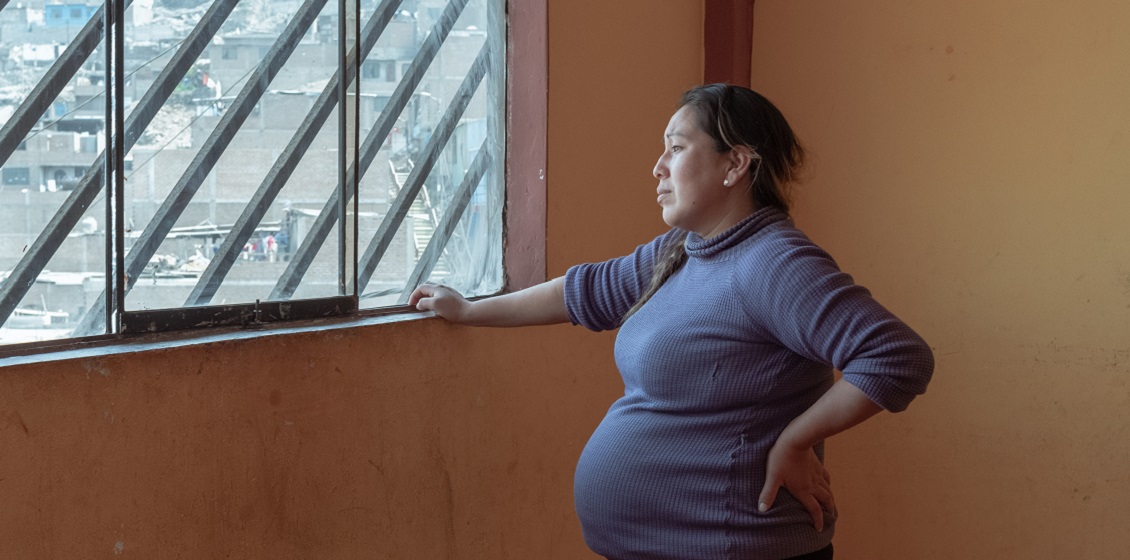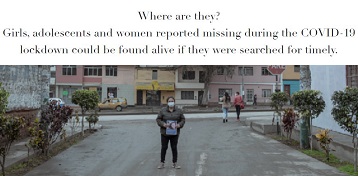 The consequences of the coronavirus in Peru go far beyond health and the economy. Female disappearances in the Latin American country have reached 11,828 in 2020, the year of the pandemic. Many are victims of sexist violence. The case of Joys Stefani tells about the agony of those who lose track of a loved one. Children are careful observers of the world around them. In this case, a young girl tells fragments of a larger story that only her mother can complete. Joys Estefani Qqueccaño Huamani, a 24-year-old indigenous Quechua woman, was last seen on the evening of the 9th of October. According to Chaska, earlier that day her uncle on her father’s side, Jesús Ccana, took her and four-year-old sister Illary to his house – an account confirmed by her family on her mother’s side – which is only some 30 metres away from where they were living with Joys Estefani.
The consequences of the coronavirus in Peru go far beyond health and the economy. Female disappearances in the Latin American country have reached 11,828 in 2020, the year of the pandemic. Many are victims of sexist violence. The case of Joys Stefani tells about the agony of those who lose track of a loved one. Children are careful observers of the world around them. In this case, a young girl tells fragments of a larger story that only her mother can complete. Joys Estefani Qqueccaño Huamani, a 24-year-old indigenous Quechua woman, was last seen on the evening of the 9th of October. According to Chaska, earlier that day her uncle on her father’s side, Jesús Ccana, took her and four-year-old sister Illary to his house – an account confirmed by her family on her mother’s side – which is only some 30 metres away from where they were living with Joys Estefani.
In the last known photo of Joys Estefani, her face is bruised, and head bandaged after being hit by her ex-partner and father of the two girls, Arturo Ccana Condori, 32. It was taken on the 28th of September and the assault was reported to the police. Arturo was arrested, but soon released. The attack took place a few weeks after Joys Estefani had separated from him: despite the rupture, they continued to live close to each other in the Pampa Ansa community, an open, arid valley of reddish land about three hours from the well-known city of Cuzco.
In many Latin American countries, Covid-19 has meant strict lockdowns and Peru is no exception. People have been confined to their homes for months, many forced to endure poor physical, economic, and social conditions. A situation that, according to experts, has aggravated the situation of children and women living in abusive households, who have been locked up with the perpetrators.
Disappeared women in Peru under Covid-19
The broken windows of Joys Estefani’s house still have blood on them. “We want justice, because the poorest are never listened to and women continue to be mistreated. That cannot be possible,” says uncle Nilo Qqueccaño with a broken voice and firm eyes. Yet the type of abuse endured by Joys Estefani is widespread in Peru.
In Peru 18,481 people have been reported missing from January to December 2020. 11,828 of them were women, in total 64 per cent, according to official police figures.
“After the successive changes in the restrictive measures, the Ombudsman’s Office warns that the increase in adult women, girls and adolescents reported as missing remains constant,” Peru’s constitutional human rights organisation wrote in a note published in the autumn. Of particular concern is the high number of girls and adolescents who have disappeared during lockdown, potentially fleeing their homes or falling victims to crimes such as femicide, kidnapping and human trafficking.
Of particular concern is the high number of girls and adolescents who disappeared during lockdown. “Minors who flee are a sign that we’ve failed as a society,” says Eliana Revollar Añaño, deputy for Women’s Rights at the Ombudsman’s Office.
Nor is the case of violence against Joys Estefani unique in Peru. On the contrary, figures concerning violence against women speak for themselves. From March to July, during the Covid-19 lockdown, the Ministry of Women registered 11,000 cases, with minors making up almost 30 per cent of victims.
The deputy indicates that something serious is happening in these homes if the minors are forced to flee. Indeed, domestic violence, sexual assault and very precarious economic conditions are commonplace. However, the authorities lack clarity on the reasons for the disappearances.
Joys Estefani was just 15 years old when she was betrothed to Arturo, in what locals call a “peasant marriage”, a traditional Quechua arranged marriage. Her uncles suspected for years that she was being abused by her partner. However, she lived in a very closeted setting, in which most of her time was divided between her ex-partner’s family and the Evangelical church they regularly attended.
The epidemic of violence against women in Peru
According to the Ombudsman’s Office, 132 femicides were registered in Peru in 2020 and as the number of disappearances increases month after month, it’s hard not to ask: why are so many girls and women disappearing?
“Our hypothesis is that the majority of minors could have fled their homes due to rape, physical and emotional violence or sexual abuse,” says Eliana Revollar Añaño, Deputy for Women’s Rights at the Ombudsman’s Office. “But we really don’t know why. And we don’t know how many are still missing, or how many have been found and in what conditions – alive or not. The lack of data is a serious problem”.
As well as in Lima, there are also reports of missing persons in the regions like Cuzco where in 2020 there were 1,011 cases of disappearances, ranking second nationally according to police data.
It is estimated that underreporting in these regions is even higher. Family members often avoid filing complaints, partly due to a lack of trust in the authorities. “It happens a lot that families are blamed for the disappearances. Or these cases are simply explained away as crimes committed out of jealousy and that the woman was probably also a little to blame”.
These are the words of Katherine Soto Torres, who founded the group Mujeres Desaparecidas Perú (Missing Women Peru) in 2016 following the disappearance of her friend Solsiret Rodríguez under strange circumstances and in response to the perception that the authorities generally aren’t doing enough to search for missing women. She recalls how several of the regions where many disappearances are reported house extractive industries, for example illegal mining; these areas are notorious for being hotbeds of human trafficking for sexual exploitation. The activist is particularly concerned about the situation in the Cusco region.
“The numbers are alarming. Cuzco is the second region with most cases nationwide. However, we still do not have a true nation-wide search system that records and disseminates all cases, in which alerts are immediately activated. If disappearances are not dealt with effectively, we won’t be able to prevent risky situations, much less find the victims alive,” says Soto Torres.
Blood on the walls
Visiting the abandoned home where Joys Estefani used to live is like entering a crime scene. Everything that was inside is now scattered outside. Toys, clothes, trash, broken glass. Recently turned soil can also be seen. Inside, there are red marks on the walls, one of which is shaped like a hand. As we approach the building, a noise can be heard, as if someone were inside – illustrating parallels between Joys Estefani’s case and that of Marleny Estrada Bolivar, who was reported missing for almost two months in Lima, Peru’s capital, until her body was found buried under her own room. During the visit, Arturo’s relatives come around constantly, as their house is a stone’s throw away.
“As poor, we ask for justice. The rights of a woman should not be violated,” says the uncle, Nilo Qqueccaño, with a broken voice and a steady gaze. “It is not fair that this should happen to a humble peasant woman with two children.” Outside the house you can see a lot of recently moved soil.
After their mother’s disappearance, Chaska and Illary stayed in police custody and were later handed over to their grandfather, since their father was considered a suspect in Joys Estefani’s disappearance, investigated as a murder case. “I’m afraid the Ccana family will make me disappear,” says her father René Qqueccaño, 44.
Soto Torres, for her part, asks for data from the area: “We don’t have precise figures. Why do they disappear? A national policy is lacking,” Soto Torres adds. “The authorities must give answers to families. It is as if their history has been erased. As if your mother, daughter or sister never existed. The state is taking something away from these families by not giving an answer. Missing women aren’t just numbers, they’re human beings”.
And if you go after the phenomenon of disappearances, they are often associated with serious crimes such as the murder of women, kidnapping and human trafficking. The activist also tells how families do not trust the authorities: “It happens a lot that loved ones are blamed for the disappearances. Or it is simply explained with jealousy, insinuating that the woman was probably also a little to blame.
Together with Joys Estefani’s uncles, as we move in front of the church the young woman used to attend with her ex-partner and his family, Arturo’s brother Jesús suddenly comes out, trembling with anger. From one moment to the next, questions and accusations are being levelled between the uncles and brother. “What happened to Joys Estefani? What have you done to her?” the uncles want to know. “And if she appears, what happens? How are you going to respond? Surely, she will appear in a week,” answers Jesús Ccana. “Don’t mess with our church,” is his aggressive message to our photographer as he covers the camera with his hands.
The consequences of not acting quickly
In the search for missing women, it is extremely important that the police act quickly. This can make the difference in relation to whether they are found alive or not. “For example, in the cases of 28 women who were reported missing, if the search had happened quickly their lives could probably have been saved,” says Revollar Añaño. “But they were found dead. And many of the femicides occur in their own homes”.
“My niece isn’t an animal, she has to appear,” says aunt Nalda Qqueccaño.
The representative of the Ombudsman’s Office mentions the state of Arequipa in the south of the country. “Here, there have been 47 cases of disappearances during confinement and 43 of them have been found alive because searches were taken seriously. We must follow that example in the rest of the country”.
A national registry is created, but many remain missing
“We have had some very painful cases that served as a basis for implementing our system of disappeared persons,” says Elsa Huallpacusi Hilario, advisor to the Ministry of the Interior, the highest authority responsible for searching for missing people. “All cases have received due treatment, but family members should collaborate much more. They report the disappearance of a relative, then they look for the person, find them and do not tell the authorities”.
In mid-October, Martín Vizcarra, who was Peruvian president at the time, launched a new national search system: a registry in which information on missing persons is collated and centrally stored.
In the meantime, in Pampa Ansa, in between adults’ conversations Chaska’s few powerful words are like fragments of her thoughts. “My mum isn’t coming back“. As weeks went by without concrete news concerning the young mother, the community began to worry more and more. Coca leaves were read on the 6th of November in the search for information about her disappearance, ancestral custom in this part of the Andes. According to the reading, Joys Estefani had been killed and buried somewhere. That same day the police questioned Arturo Ccana. He confessed to having murdered Joys Estefani.
The community left for what was once the young woman’s home, arriving as police and Arturo also reached the property. He pointed out the place where he had buried the mother of his two daughters. Joys Estefani Qqueccaño Huamani’s body was found 90 centimetres underground. Her family finally got answers, though perhaps of the most tragic kind, as thousands of Peruvian families are still waiting for news of their missing mothers, daughters and sisters.
Note: The magazine on law at the National University in the Highlands of Puno (Universidad Nacional del Altiplano de Puno) in Peru published an article in 2021 stating that “the most common type of disappearance is that carried out by individuals… the disappearance of women and girls, who are also often subjected to crimes such as femicide or sexual torture.” The research concluded that the time factor is crucial in the search for the disappeared girls and women: “The first 48 hours following the disappearance of a girl or woman are crucial to carry out the search and investigation procedures carried out by the corresponding authorities, since a delay in it will cause a greater risk of danger and death. For this reason, the training of public officials in a gender approach and respect for women’s rights is of great importance”. (full text in Spanish available for download in the sidebar)
Lise Josefsen Hermann is a freelance journalist based in Latin America for more than a decade. She specializes in environmental issues and climate change, human rights, indigenous peoples, migration and more. She is a Pulitzer Grantee and her work has been published with media like Al Jazeera, BBC, Deutsche Welle, Danish Broadcasting Corporation, Danish Development Research Network, El Pais, New York Times, and Undark Magazine.
SUPPORT DDRN SCIENCE JOURNALISM. DONATE DKK 20 OR MORE (APPLICABLE IN DENMARK ONLY)
(APPLICABLE IN DENMARK ONLY)
Sept. 5th, San Juan de Lurigancho Neighborhood, Lima.
Cinthia Estrada Bolivar (31) is 8 months pregnant and looks out her window with the sadness of the disappearance of her sister Marleny Estrada Bolivar (28) whom she has been looking for since July 13, 2020.
![]()

Nov.24th, District Pampamarca, Province of Canas, Cusco
The last photo of Joys Estefani Qqueccaño Huamani (24) before her disappearance on October 9, 2020. In the image, Joys Estefani has her face bruised and her head bandaged after being assaulted by her ex-partner and father of her two daughters Arturo Ccana Condori (32) on September 28. She sent this photo to her younger brother Percy Qqueccaño.
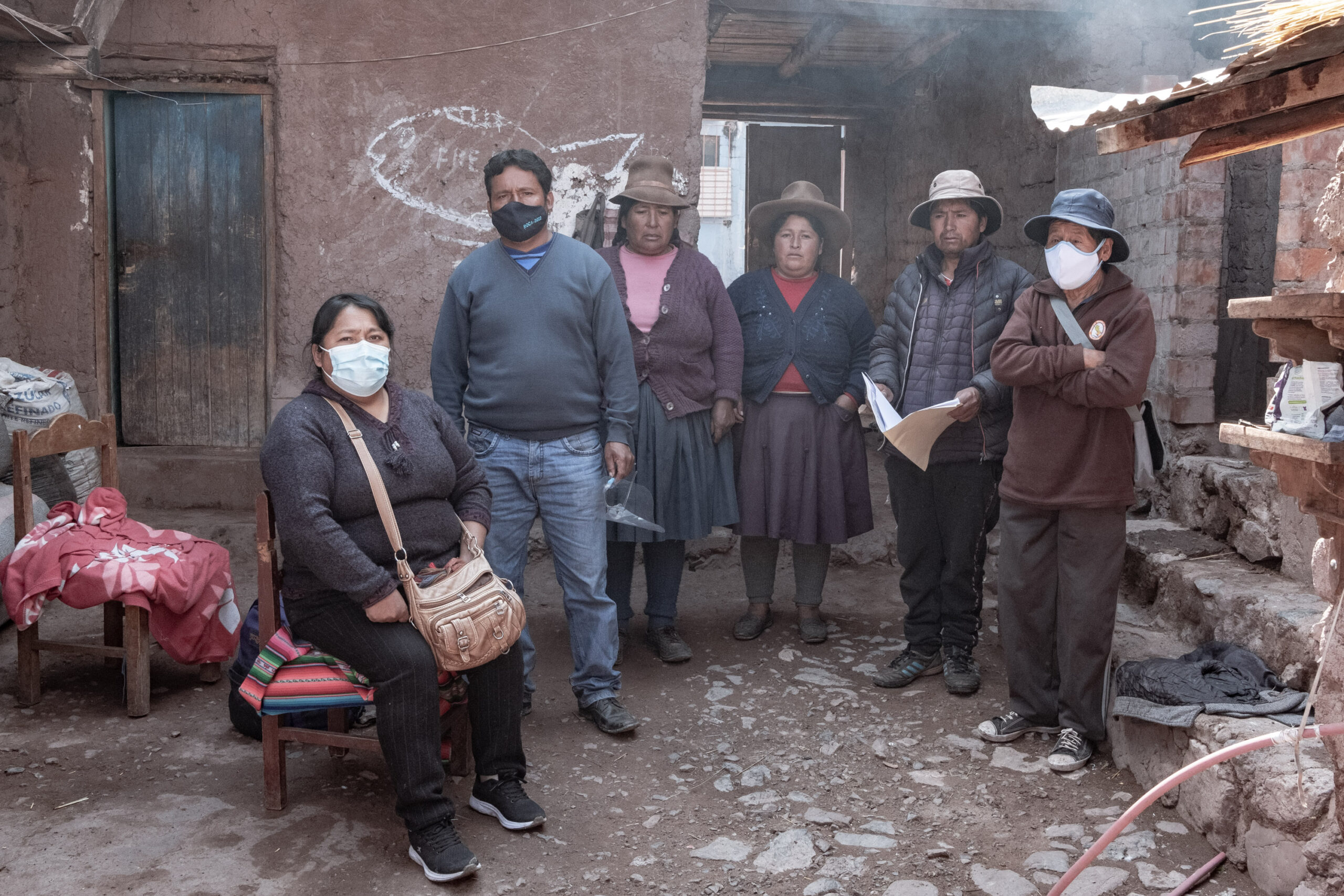
Nov.24th, District Pampamarca, Province of Canas, Cusco
The family of Joys Estefani Qqueccaño Huamani (24) gathered to look for her. From right to left: Leonardo Qqueccaño, René Qqueccaño, Rudisenda Qqueccaño, Christina Mamani, Nilo Qqueccaño and Nalda Qqueccaño. The father of the disappeared, Rene Qqueccaño, holds the documents of the report of disappearance issued last October 12.
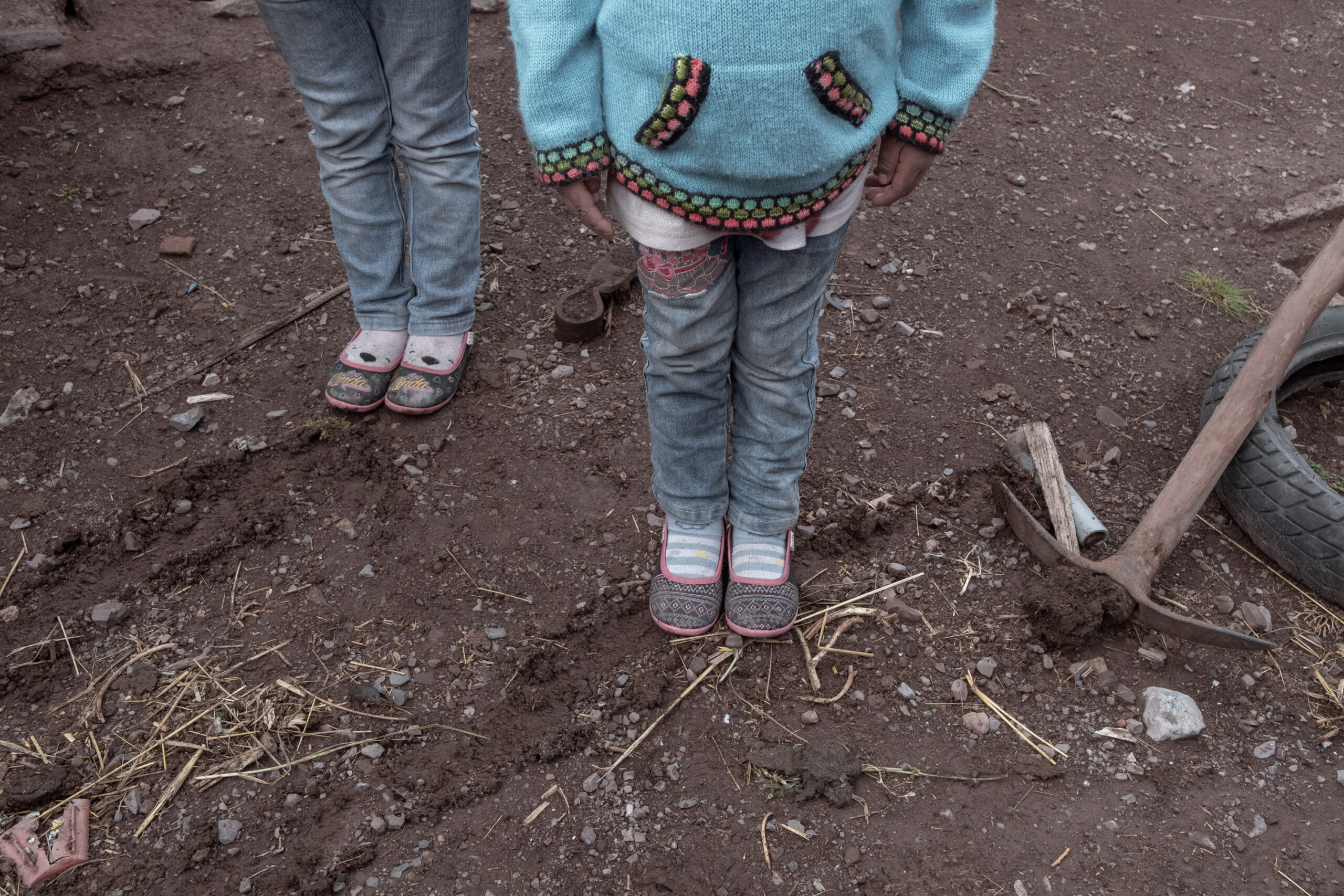
Nov.24th, District Pampamarca, Province of Canas, Cusco
Illary Ccana (4) and Chaska Ccana (6), daughters of Joys Estefani Qqueccaño Huamani (24) who disappeared on the night of October 9. Their father, Arturo Ccana Condori (32) is the main suspect in Joys Estefani’s disappearance.
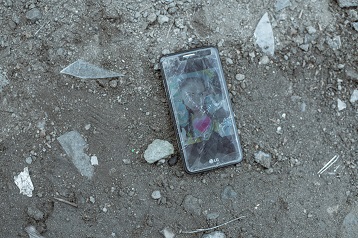
The last photo of Marleny Estrada Bolivar (28) wearing a Peruvian folkloric costume. Marleny disappeared on July 13, 2020, she was last seen returning home after the “olla comun” activity, a community meal to stop the extreme poverty caused by the pandemic.

Cinthia Estrada Bolivar (31) and her 3 year old daughter, standing in front of their house accompanied by their relatives. During the previous night, her sister Marleny Estrada Bolivar (28) was found buried one and a half meters deep in the room of her house.
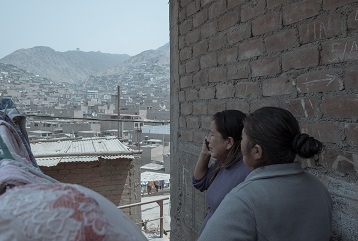
Cinthia Estrada Bolivar (31) accompanied by Yesenia Aylas (42) receives calls from other family members about his sister’s murder. During the night of September 4, Cinthia found the dead body of her sister Marleny Estrada Bolivas (28). This murder was considered a feminicide and the main suspect is Marleny’s husband who fled, in the eyes of the authorities, with her 3- and 8-year-old children.
Check webinar program 27.april 2021, 4.00-5.30pm

All photos by Florence Goupil – photojournalist based in Peru. Her work has been exhibited at the ICP (New York) and published in National Geographic, Polka Magazine, PhMuseum, etc. In 2020, Florence Goupil became a National Geographic Explorer and was awarded with the GeVy Images Reportage Grant.


